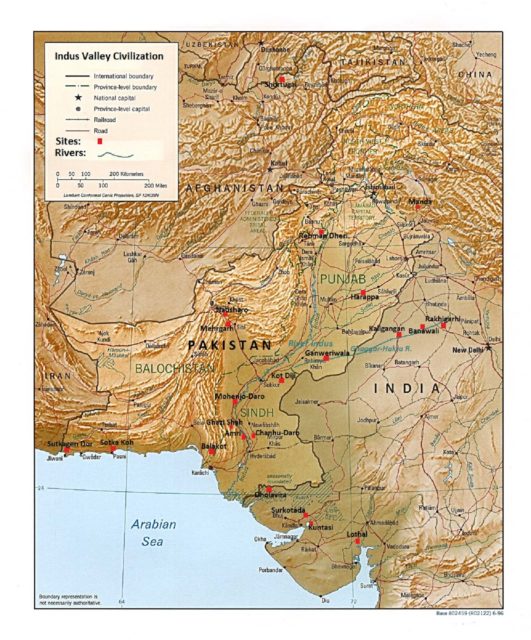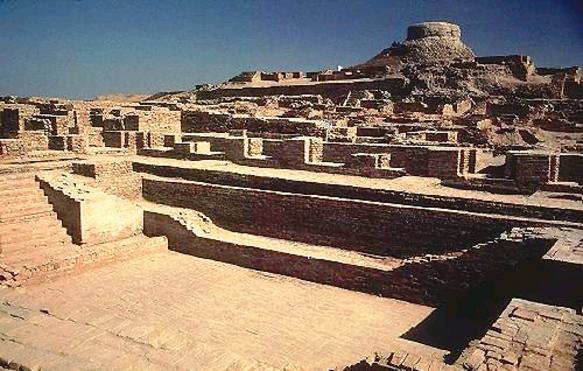When one thinks of Egypt, they think of just how advance their civilization was. They had great rulers, massive pyramids that still intrigue experts today, and a rather complex system of governance.
Although Egypt was one of the early advanced civilizations, experts now believe that the Indus Valley Civilization in India and Pakistan predates Egypt and Mesopotamia. These civilizations are well known for their planned cities.
The Indus Valley Civilization is already known as one of the oldest in the world. However, experts now believe that it is 8,000 years old, or 2,500 years older than it was previously believed.

The new study also gives new light on why the flourishing civilization suddenly collapsed.
A team of experts from the Archaeological Survey of India (ASI), Institute of Archaeology, Deccan College Pune, and IIT Kharagpur, all have carefully analyzed the pottery fragments and bones from animals from the Bhirrana. The team of researchers used special techniques like carbon dating to look into the artifacts.

The scientists had written in a journal that by looking at the radiocarbon ages from the different trenches and levels in the settlement, it shows that Bhirrana is believed to be the oldest habitation in the Indian continent.
The experts had also used what is known as optically stimulated luminescence (OSL) to check the dating and investigate further to see whether or not the climate changed when the civilization seemed to be thriving. If the experts are able to answer this question, it could probably give a little more insight about the oldest city.
Although more tests are still needed to be run, the study does suggest that the civilization predates Egypt and Mesopotamia. These two cities are still famous for their impressive organized cities.
It is believed civilization had spread across areas that are now considered Pakistan and northwest India during the Bronze Age. At the city’s peak, there were about five million people living in one million square miles just along the basins of the Indus River. There have been pottery and metals found at certain sites in the region. These materials indicate that the culture was advanced enough that craftsmen were able to work with metals such as copper, bronze, lead, tin, and even bake bricks and control and supply the drainage of water.
A professor at the department of geology and geophysics at IIT Kharagpur, Anindya Sarkar, said that she and her team’s study had pushed the antiquity of the cities to as far back as the 8th millennium before the present. This shows that man had evolved human settlements in the Indian sub-continent. The particular sites at Harappa and Mohenjo-daro in Pakistan show researchers that the people were great planners and farmers.
These particular sites had been found back in the 1920s. They are now protected by UNESCO, since Moehnjo-daro is one of the most advanced settlements of the Indus Valley Civilization. There were streets around rectangular, brick houses. There were two huge assembly halls, a marketplace, public baths, and a central well. Individual homes had gotten their water from smaller wells. Waste water was channeled into main streets, and some of the larger homes had their own bath and second story.
Some experts believe that the city was quite successful and advanced. However, it had been wiped out when the Indus River dried up due to climate change. Other experts have different theories on how the city was wiped out. Some believe that the Aryans had invaded the city, or there could have been devastating floods, changing sea levels, general societal violence, or infectious diseases.
However, this team has come up with a new theory suggesting that the climate was most likely not the cause of Harappan decline. The ancient people had relied on regular monsoons around 9,000 to 7,000 years ago in order to water their crops. After this period, the Bhirrana people showed up and continued to survive despite the weather changing.
Evidence shows that the people had changed their crop patterns from large-grained cereals like wheat and barley when the monsoons intensified. They changed their crops to the drought-resistant species like millets and rice, allowing them to change their crop strategies whenever the climate called for it.
Although this was a brilliant change, it caused people to stop relying on the farming of larger crops. Individual families began their own farms just to take care of their own families, which in turn caused the city to collapse since it could not rely on the people who lived there any longer to keep it successful.
